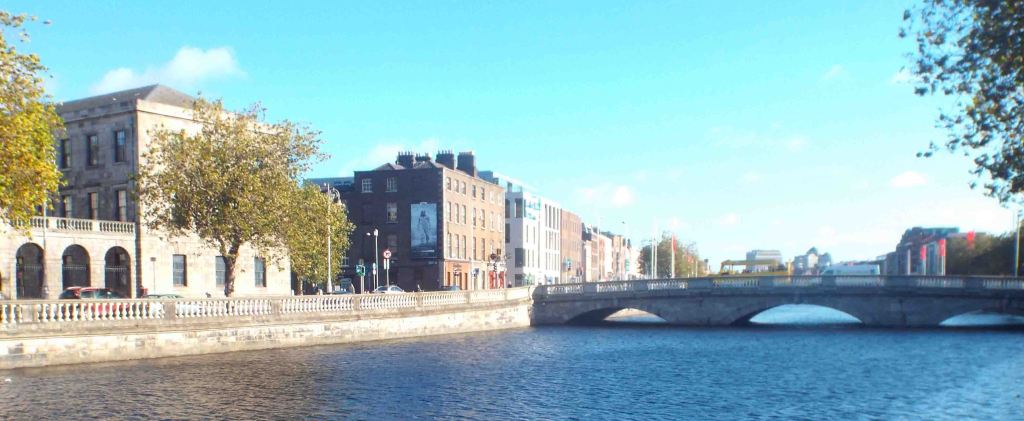It was the first of a pair of bridges designed by James Savage and constructed by George Knowles, both of which are still looking good after more than two hundred years. It was opened on the 17th March 1816, and two years later they once again teamed up and the result was the Father Matthew Bridge which opened in 1818.
The bridge, the second oldest over the Liffey, was originally a timber construction and built by the developer Humphrey Jervis and called Ormonde Bridge in honour of the then Lord Lieutenant of Ireland. Being a man who was not given to decoration the bridge had no railings, something that caused many an accident to pedestrians and animals alike!
A later version was badly damaged by floods in 1802 before it was decided to build a new stone bridge. A competition was held and James Savage’s design won in 1805, although the foundation stone was not laid until 1813. When it was completed in 1816 (for a cost of £29,950) is was called the Richmond Bridge after the then Lord Lieutenant of Ireland, the Duke of Richmond.
The bridge is made from granite quarried in Wicklow, and it has a span of 45 metres. It is 15 metres in width, and this made it wider, when completed, than any bridge over the Thames in London. It’s a three-arch construction and the three keystones that face east represent Plenty, Anna Livia and Industry, while those facing west show Commerce, Hibernia and Peace.
Like many other bridges it had another name change, this time in 1922, to O’Donovan Rossa Bridge. This was in honour of Jeremiah O’Donovan Rossa, the Fenian leader who was born in Rosscarbery, County Cork, in 1831. Having seen the terrible damage done by the Famine he got involved in politics, and became a member of the Irish Republican Brotherhood. He was sentenced to life in prison in 1865 but was released in 1871 and went to America where he died on 29th June 1915.

O’Donovan Rossa Memorial, St Stephen’s Green, Dublin





